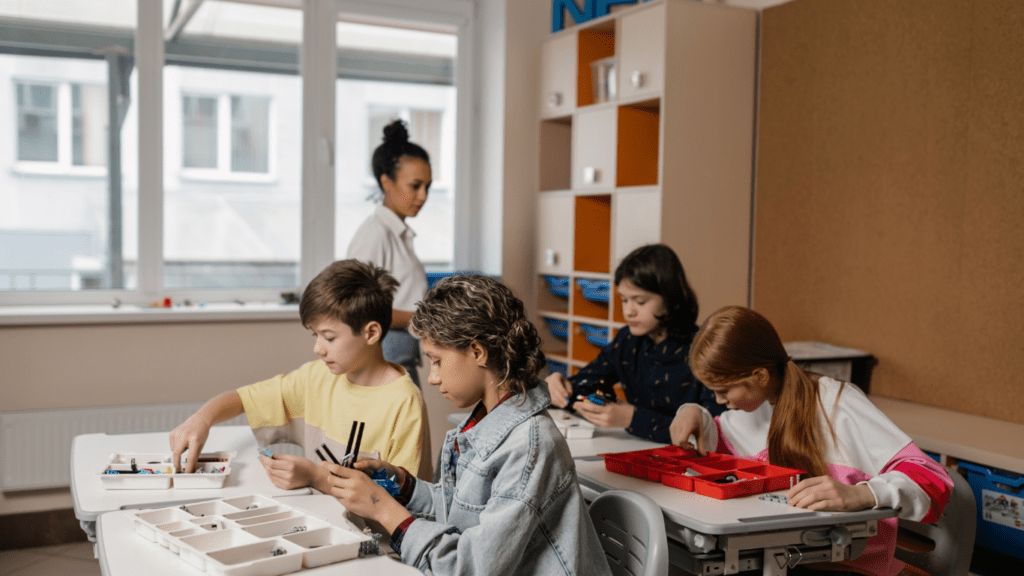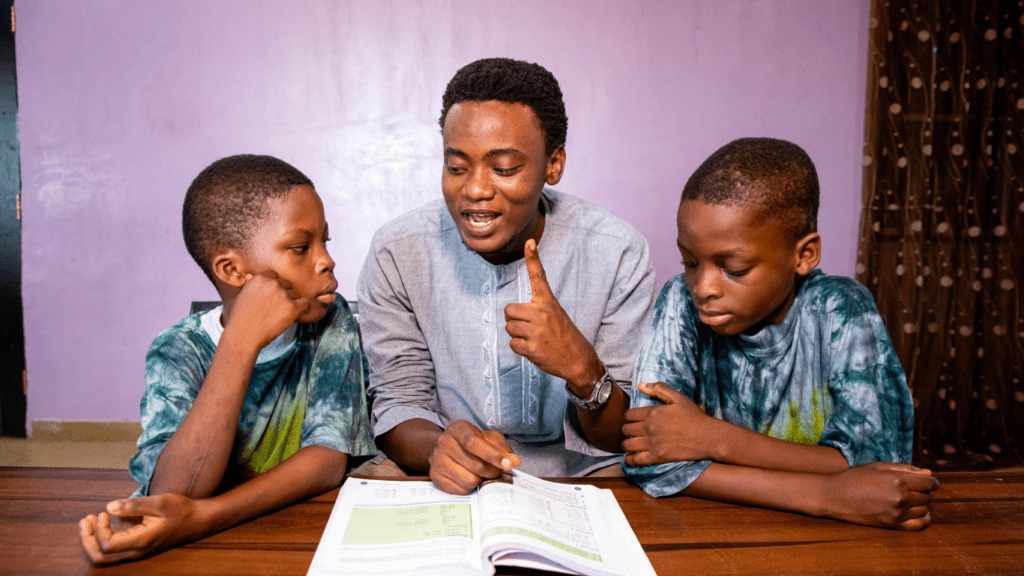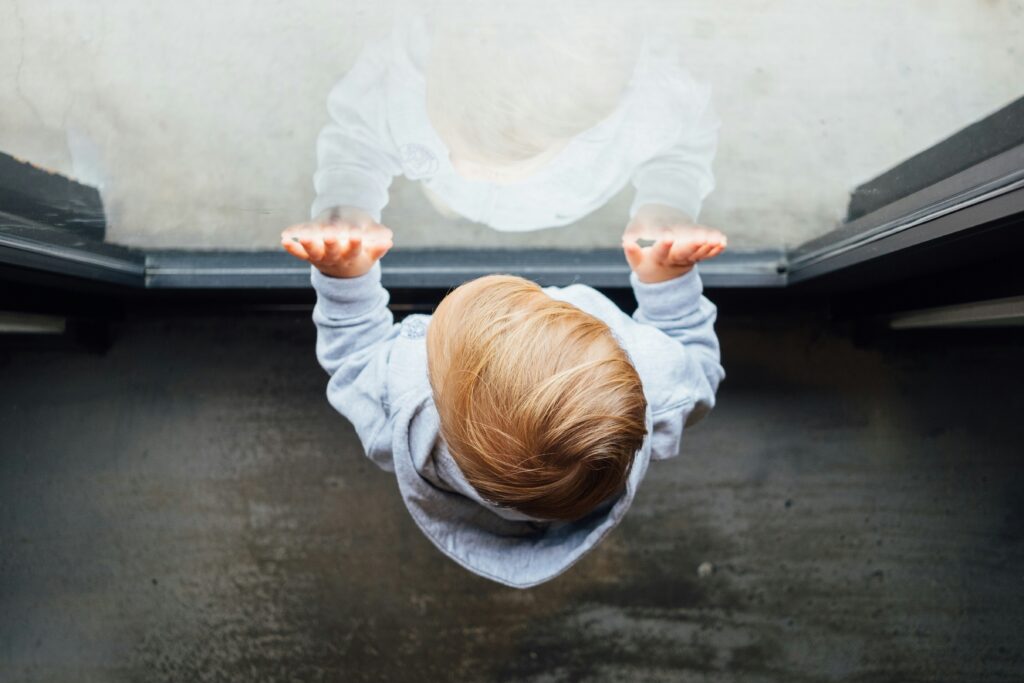Understanding Mindfulness in Childhood
Mindfulness offers several benefits for children, helping them navigate their formative years.
What Is Mindfulness?
Mindfulness is the practice of being fully present and engaged in the current moment. It involves paying attention to one’s thoughts, feelings, and surroundings without judgment.
Children practice mindfulness by focusing on their breathing, engaging in mindful activities, or simply noticing their senses. This practice fosters self-awareness and emotional intelligence.
Why It’s Essential Early On
Introducing mindfulness early enhances children’s emotional regulation, concentration, and empathy.
- Children with mindfulness skills manage stress more effectively and have better focus in academic tasks.
- Research indicates that early mindfulness practices lead to long-term benefits, including improved mental health and social interactions.
- Establishing these habits in childhood prepares them for a balanced, mindful adulthood.
The Benefits of Mindfulness for Children

Mindfulness provides children with essential tools to navigate life’s challenges effectively. It supports emotional regulation, enhances focus, and improves social interactions.
Emotional Regulation and Resilience
Mindfulness helps children manage their emotions by fostering awareness of their feelings. They learn to observe emotions without immediate reactivity, which builds resilience. Regular mindfulness practice reduces anxiety and stress, providing children with a stable emotional foundation.
Improved Focus and Academic Performance
Children engaging in mindfulness activities exhibit better concentration in class. Mindfulness exercises, such as:
- focused breathing
- enhance attention spans
- reduce distractions
A study by the Journal of Applied School Psychology reports improved academic performance among students practicing mindfulness, as they can better manage their time and tasks.
Enhancement of Social Skills
Mindfulness improves children’s empathy and understanding of others. When practicing mindfulness, children develop greater emotional intelligence, which aids in conflict resolution and positive social interactions.
They learn to listen actively and respond thoughtfully, which strengthens their relationships with peers and adults.
Implementing Mindfulness Practices in Education
Integrating mindfulness practices in education enhances both teaching and learning experiences. These practices foster a supportive environment, aiding in students’ emotional and cognitive development.
Mindfulness Activities Suitable for Schools
Schools benefit from a variety of mindfulness activities tailored to children’s developmental stages. Simple breathing exercises, such as deep breathing or belly breathing, help students calm their minds.
Guided imagery, where children visualize peaceful scenes, aids relaxation and stress reduction. Another effective activity involves sensory awareness exercises; students focus on their senses momentarily, grounding themselves in the present.
Classroom routines incorporating mindfulness, like a few minutes of silent sitting at the start or end of the day, set a calm tone for learning. Mindful walking, where students notice their steps and surroundings, can also be incorporated during breaks or transitions.
Training Teachers to Teach Mindfulness
Teachers require specific training to effectively deliver mindfulness practices.
- Professional development programs offer strategies and resources for embedding mindfulness in daily classroom activities.
- Programs like Mindful Schools or the Inner Explorer provide structured training and ongoing support.
- Training helps teachers model mindfulness, creating a calm classroom environment crucial for effective learning.
- Workshops and continuous education ensure that teachers maintain their skills and adapt mindfulness practices to meet students’ unique needs.
By equipping teachers with mindfulness skills, educational institutions foster a holistic approach to student well-being and academic success.
Challenges and Considerations
Introducing mindfulness to children comes with several challenges and considerations. Recognizing these ensures the effective implementation of mindfulness practices.
Addressing Skepticism Among Educators and Parents
Many educators and parents remain skeptical about mindfulness. I understand that some view it as a non-essential practice. Educating stakeholders about the science behind mindfulness can mitigate skepticism
. Research from reputable sources like the American Psychological Association shows that mindfulness improves focus and emotional regulation. Hosting informational sessions and sharing success stories from other schools helps build trust.
If parents and educators understand the benefits, they are more likely to support mindfulness initiatives.
Adapting Mindfulness to Different Age Groups
Adapting mindfulness practices to suit various age groups is crucial. Younger children benefit from simple, short activities like breathing exercises or guided imagery. For example, asking them to imagine their favorite place can help them relax.
Older children and teenagers might engage in more structured mindfulness exercises like body scans or mindful journaling. Each age group requires different approaches to ensure mindfulness practices are effective and engaging.
Tailoring activities keeps students interested and enhances the positive impact of mindfulness.

 Sarah Ainslie is an experienced article writer who has played a crucial role in the development of Toddler Health Roll. With a passion for child health and wellness, Sarah's writing offers parents insightful and actionable advice on nurturing their toddlers. Her articles are well-researched and thoughtfully crafted, providing practical tips on everything from nutrition to emotional well-being, making her contributions invaluable to the platform.
Sarah's dedication goes beyond just writing; she has been instrumental in shaping the content and direction of Toddler Health Roll, ensuring that it meets the needs of parents seeking reliable guidance. Her work has helped establish the platform as a trusted resource for families, offering comprehensive support for raising happy, healthy toddlers.
Sarah Ainslie is an experienced article writer who has played a crucial role in the development of Toddler Health Roll. With a passion for child health and wellness, Sarah's writing offers parents insightful and actionable advice on nurturing their toddlers. Her articles are well-researched and thoughtfully crafted, providing practical tips on everything from nutrition to emotional well-being, making her contributions invaluable to the platform.
Sarah's dedication goes beyond just writing; she has been instrumental in shaping the content and direction of Toddler Health Roll, ensuring that it meets the needs of parents seeking reliable guidance. Her work has helped establish the platform as a trusted resource for families, offering comprehensive support for raising happy, healthy toddlers.
